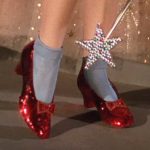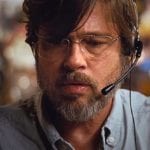 Technology
Technology  Technology
Technology  Humans
Humans 10 Everyday Human Behaviors That Are Actually Survival Instincts
 Animals
Animals 10 Animals That Humiliated and Harmed Historical Leaders
 History
History 10 Most Influential Protests in Modern History
 Creepy
Creepy 10 More Representations of Death from Myth, Legend, and Folktale
 Technology
Technology 10 Scientific Breakthroughs of 2025 That’ll Change Everything
 Our World
Our World 10 Ways Icelandic Culture Makes Other Countries Look Boring
 Misconceptions
Misconceptions 10 Common Misconceptions About the Victorian Era
 Mysteries
Mysteries 10 Strange Unexplained Mysteries of 2025
 Miscellaneous
Miscellaneous 10 of History’s Most Bell-Ringing Finishing Moves
 Technology
Technology Top 10 Everyday Tech Buzzwords That Hide a Darker Past
 Humans
Humans 10 Everyday Human Behaviors That Are Actually Survival Instincts
 Animals
Animals 10 Animals That Humiliated and Harmed Historical Leaders
Who's Behind Listverse?

Jamie Frater
Head Editor
Jamie founded Listverse due to an insatiable desire to share fascinating, obscure, and bizarre facts. He has been a guest speaker on numerous national radio and television stations and is a five time published author.
More About Us History
History 10 Most Influential Protests in Modern History
 Creepy
Creepy 10 More Representations of Death from Myth, Legend, and Folktale
 Technology
Technology 10 Scientific Breakthroughs of 2025 That’ll Change Everything
 Our World
Our World 10 Ways Icelandic Culture Makes Other Countries Look Boring
 Misconceptions
Misconceptions 10 Common Misconceptions About the Victorian Era
 Mysteries
Mysteries 10 Strange Unexplained Mysteries of 2025
 Miscellaneous
Miscellaneous 10 of History’s Most Bell-Ringing Finishing Moves
10 More Screen Greats Never Voted Oscar’s “Best”
Yes, it is an honor just to be formally recognized as among the best in one’s field. But competition for the Academy Award of Merit, the statuette known affectionately as Oscar, is not the Olympics. No one will take home silver or bronze. Only gold. In this case, a 24-karat plate over solid bronze. While these ten filmmakers have entertained audiences across generations, none of them ever won that shiny, bald guy in competition with their peers.
Related: 10 Unexpected Things That Happened During Award Shows
10 Greta Garbo
When Greta Garbo came to Hollywood from Sweden in 1925, English language skills were not required for stardom. But while many big names of the silent era flamed out when “talkies” arrived, fans flocked to Anna Christie (1930) to hear if Garbo’s voice would match her image. And they were not disappointed when she sat down at a restaurant table and said, “Gimme a whiskey, ginger ale on the side, and don’t be stingy, baby.” She received a combined Academy Award nomination for that movie and for Romance, released later the same year, as she would for three others, including the tear-jerker Camille (1936) and the comedy Ninotchka (1939).
Two years later, Garbo retired from acting without a win. In 1955, the Academy recognized her with an Honorary Award for “her unforgettable screen performances.” She did not attend the ceremony, but contrary to myth, Garbo did not become a recluse. Nor did she ever utter a phrase famously attributed to her. As she refuted in a 1955 Life Magazine article, “I never said, ‘I want to be alone.’ I only said, ‘I want to be let alone! There is all the difference.”[1]
9 Kirk Douglas
Though never an Oscar winner in a career that spanned more than half of his 103 years, Kirk Douglas brought his talent and distinctive cleft chin to varied characters. He received Lead Actor nominations for playing a boxer (Champion, 1949), an unscrupulous movie producer (The Bad and the Beautiful, 1952), and Vincent van Gogh (Lust for Life, 1956), but surprisingly not for perhaps his most famous role in the epic Spartacus (1960).
In pursuit of his own material, Douglas optioned rights to the 1962 novel One Flew Over the Cuckoo’s Nest, but by the time a studio could be convinced to make the movie, he had aged out of the lead, and the part went to Jack Nicholson. When the film became only the second to sweep the top five Academy categories for 1975, Kirk’s son Michael took home his first Oscar as its producer, keeping it all in the family.
In 1996, Kirk received his own Honorary Award for “50 years as a creative and moral force in the motion picture community.” Truly a moral force in his contribution to ending the Hollywood blacklist of the 1950s and a force of nature in accepting his Oscar in person only weeks after suffering a major stroke.[2]
8 Barbara Stanwyck
Brains, beauty, wit, wickedness—Barbara Stanwyck could bring the complete package. Her four Best Actress nominations demonstrate her versatility in melodrama (Stella Dallas, 1937), romantic comedy (Ball of Fire, 1941), film noir (Double Indemnity, 1944), and suspense (Sorry, Wrong Number, 1948). She won hearts as a lovable card shark seducing Henry Fonda in The Lady Eve (1941) and as a popular food writer with no real-life domestic skills in the holiday classic Christmas in Connecticut (1945)… but no Oscar.
Though passed over by Academy voters, Stanwyck’s work on the small screen brought her Emmy awards for the series The Big Valley (1965) and the miniseries The Thorn Birds (1983). In 1982, the Academy caught up with critics and fans alike and gave her an Honorary Award for “superlative creativity and unique contribution to the art of screen acting.”[3]
7 Fred Astaire
A special award for Worst Talent Assessment goes to the studio underling who reviewed Fred Astaire’s screen test and purportedly wrote, “Can’t act. Slightly bald. Can dance a little.” Fortunately, producer David O. Selznick spotted Astaire’s on-screen charm and paired him with Ginger Rogers in the Delores del Rio vehicle Flying Down to Rio (1933). Their single dance number would make stars of them both in the nine additional films they made together, including Top Hat (1935) and Shall We Dance (1937).
In 1950, Astaire received an Honorary Award for “his unique artistry and his contributions to the technique of musical pictures.” He continued to enjoy box office success as a solo act, often featuring creative choreography such as his dance on the ceiling in Royal Wedding (1951). His lone nomination came two decades later for a supporting role in the distinctly non-musical disaster drama The Towering Inferno (1974). But contrary to the popular saying that Ginger did everything Fred did, only backward and in heels, Rogers went him one better, winning Best Actress for the drama Kitty Foyle (1940).[4]
6 Myrna Loy
Initially, Hollywood did not know quite what to do with this Montana native, born Myrna Williams. During the waning years of the silent era, Myrna Loy had a string of bit parts, playing a maid, slave girl, or vamp, and she appeared as an uncredited chorus girl in the first talkie, The Jazz Singer (1927). She finally found her groove as Nora Charles in The Thin Man (1934), a character she would reprise with costar William Powell five times over the next thirteen years.
She went on to own the role of smart, gracious, but takes-no-guff wife or love interest opposite the biggest leading men of her era. These included Clark Gable (Test Pilot and Too Hot to Handle, both 1938), Frederic March (The Best Years of Our Lives, 1946), Cary Grant (Mr. Blandings Builds His Dreamhouse, 1948), and Clifton Webb (Cheaper by the Dozen, 1950).
Yet despite this stellar career, not so much as an Oscar nomination. Finally, in 1991 she received an Honorary Award in “recognition of her extraordinary qualities both on screen and off, with appreciation for a lifetime’s worth of indelible performances.” At age eighty-five, she was too frail to travel across the country, but the Academy arranged a satellite hookup so she could make her acceptance speech from her New York City apartment.[5]
5 William Powell
William Horatio Powell, Loy’s costar in the popular Thin Man franchise and several other films, faired only slightly better with the Motion Picture Academy. Like her, he worked steadily during the 1920s before making his name as detective Philo Vance, starting with The Canary Murder Case (1929), a warmup for the Nick Charles role that would earn him an Oscar nod for 1934.
Over the next two decades, Powell would charm other leading ladies, including Jean Arthur (The Ex-Mrs. Bradford, 1936), Carole Lombard (My Man Godfrey, 1936), and Irene Dunne (Life with Father, 1948), and the latter two films rounded out his list of nominations. A class act right through to his final roles as a suitor to Lauren Bacall in How to Marry a Millionaire (1953) and confidant to Henry Fonda in the WWII comedy-drama Mr. Roberts (1955), he was honored with a star on the Hollywood Walk of Fame in 1960 but never a statuette.[6]
4 Gene Kelly
Gene Kelly once said of himself, “If Fred Astaire is the Cary Grant of dance, I’m the Marlon Brando.” Yet the two hoofers share the fact that, despite their impressive film legacies, neither ever won an Academy Award. After scoring a hit in the 1940 Broadway musical Pal Joey, Kelly came to Hollywood on a one-picture contract and never looked back.
He received just a single Oscar nomination for Best Actor in Anchors Aweigh (1945) even though he directed and/or starred in the classic musicals On the Town (1949), An American in Paris (1951), and Singin’ in the Rain (1952). This last film tops the American Film Institute’s list of the 25 Greatest Movie Musicals of All Time. In 1952, he received an Honorary Award in “appreciation of his versatility as an actor, singer, director and dancer, and specifically for his brilliant achievements in the art of choreography on film.”[7]
3 Angela Lansbury
So much talent, yet no competitive Oscar to show for it. The late Angela Lansbury launched her Hollywood career with back-to-back nominations for Best Actress in a Supporting Role for Gaslight (1944) and The Picture of Dorian Gray (1945) while still in her teens. The Manchurian Candidate (1962) gave her a third shot, when at age thirty-seven, she portrayed the politically ambitious mother of a former POW played by Laurence Harvey, in reality only three years her junior.
In contrast, Lansbury won five Tony awards, including for leads in the Broadway musicals Mame (1966), Gypsy (1975), Sweeney Todd: The Demon Barber of Fleet Street (1979), and for a featured role in Blithe Spirit (2009). She was nominated for a Prime Time Emmy each of the twelve seasons of Murder, She Wrote (1984-1996), and it remains a mystery how she never won. After work including Miss Marple in The Mirror Crack’d (1980) and the voice of Mrs. Potts in Beauty and the Beast (1991), her big-screen performances were finally recognized in 2014 with an Honorary Award for being “an entertainment icon who has created some of cinema’s most memorable characters, inspiring generations of actors.”[8]
2 Alfred Hitchcock
Scary to think that a director who kept movie-goers on the edge of their seat for more than four decades never knocked off an Oscar win. Following success in Great Britain, Alfred Hitchcock moved to the States and earned a nomination for his Hollywood directorial debut, Rebecca (1940), which was voted Best Picture. Later nominations came for Lifeboat (1944), Spellbound (1945), Rear Window (1954), and Psycho (1960). In addition, classics such as Strangers on a Train (1951), Vertigo (1958), North by Northwest (1959), and The Birds (1963) defined their genre. After Hitchcock, who could ever look at a crop duster, a flock of crows, or a shower curtain in quite the same way?
In 1968, the Academy gave him the Irving G. Thalberg Memorial Award, presented periodically to “creative producers whose bodies of work reflect a consistently high quality of motion picture production.” At the ceremony, the honoree came on stage to the theme music from his popular TV show, Alfred Hitchcock Presents, accepted the award, and said simply, “Thank you.” After a dramatic pause, the master of suspense turned back to the microphone and added, “Very much indeed.”[9]
1 Robert Altman
Unlike Hitchcock, with director Robert Altman, audiences never knew what to expect, as his projects jumped all over the artistic map. After two decades of cranking out short subjects and TV shows as middle-America as Bonanza, Route 66, and Combat!, he burst into theaters with the big-screen adaptation of M*A*S*H (1970), which brought him his first Oscar nomination for Best Director. He promptly followed up that box office hit with the cult classic Brewster McCloud (1970) and the moody western McCabe & Mrs. Miller (1971).
Additional nominations came for the country-music-meets-politics mix of Nashville (1975), a cynical skewering of Hollywood itself in The Player (1992), interlocking stories with an all-star cast in Short Cuts (1993), and murder at an English country estate in Gosford Park (2001). In between, he made a live-action Popeye (1980) with Robin Williams in his film debut and examined the world of Paris high fashion in Ready to Wear (1994).
Twice, Altman also earned a Best Picture nomination as producer, yet never a win. In March 2006, he received an Honorary Award “in recognition of a career that has repeatedly reinvented the art form and inspired filmmakers and audiences alike.” Yet despite the range of his subject matter, he stated in his acceptance speech, “to me, I’ve just made one long film.”[10]








